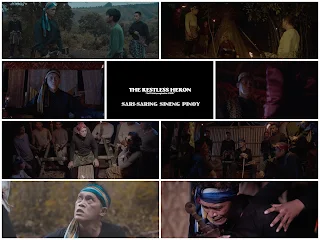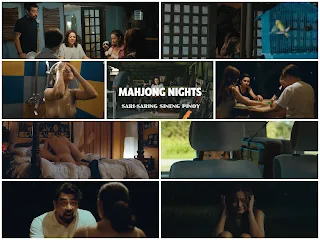Romy Suzara’s Somewhere (Viva Films, 1984) achieves thematic unity through its theme, that man is a victim of circumstances. Silvio Logarte (Rudy Fernandez), is imprisoned for a crime he did not commit. Similarly, his attack on Logan (Johnny Delgado) is as much a product of fear for his own life as it is revenge for the death of his best friend Tengteng (Dencio Padilla). In a sense, Silvio is guiltless, both legally and morally. Despite his innocence, he is convicted, discriminated against and finally killed. Somewhere succeeds by putting violence in its rightful place. It is violent because the film can only end in violence. Fernandez, in a powerful performance is able to show Silvio's charm and violent side. He navigates every nuance of Silvio's soul, showing the haunted logic of a man shut out of society. Somewhere has a blunt, repetitive structure. Essentially, it’s one victimization scene after another. Yet the movie's paradox is singing sensation Shirley Morena (Lorna Tolentino) as she slips into her role as Silvio's obsession, Shirley begins to come alive as a character. Tolentino has an emotional presence bringing out her tremulous vulnerability. To break free, Shirley looked into Silvio's eyes and when she finally does, it’s a triumph to savor.
This high definition release is sourced from a pre-existing master. The majority of the well-lit close-ups, for instance, boast decent depth. Shadow definition could be better managed. A full restoration would undoubtedly produce an overall balanced image. Contrast levels remain stable. Fluidity is good, but occasionally some light unevenness pops up. Grain is present throughout the entire film, but it could be better resolved. Still, despite some very small fluctuations there are no troubling anomalies. Colors are stable and natural but some small nuances are missing. There are no large debris, cuts, stains, damage marks or warped frames. There is room for improvement and a brand new master would have certainly given the film a fresher appearance, but this is a fine organic presentation making it easy to enjoy even on fairly large screens. The audio has not been remastered, in fact, in segments where George Canseco's score has a prominent role, depth and balance are surprisingly good. The dialog is clean, stable, and easy to follow. Somewhere is a story of pain and courage, uncommonly honest and unflinching.
Production Design: Manny Morfe
Musical Director: George Canseco
Director of Photography: Ernie de la Paz
Film Editor: Ike Jarlego, Jr.
Sound Supervision: Vic Macamay
Screenplay: Jose N. Carreon, Orlando Nadres
Directed By: Romy Suzara














